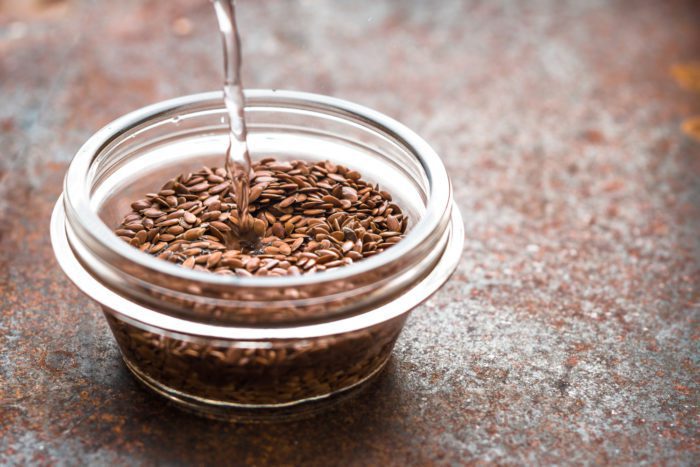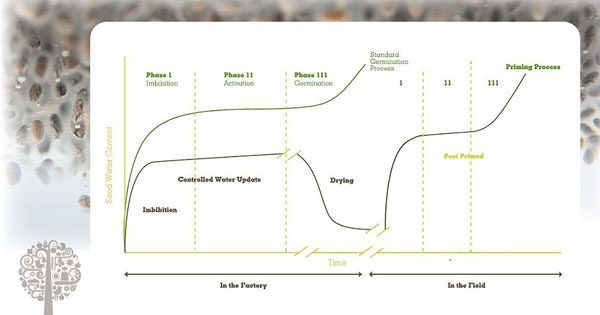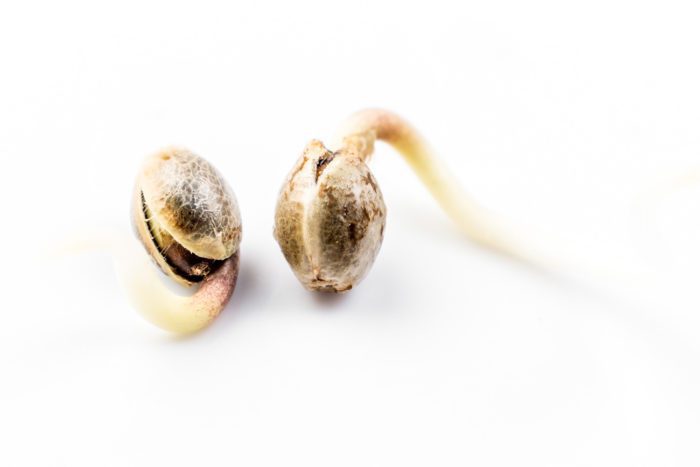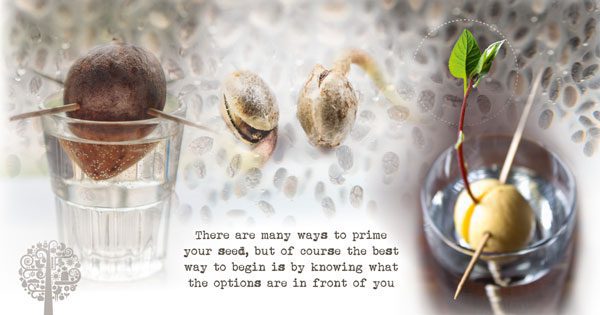Ever wondered how you can give your plants an unfair advantage before they’ve even sprouted? Seed priming allows you to give your unborn sprout a boosted start to life that it would never be privileged to in the natural world.
There are many different ways to germinate seeds, from simply putting them into some soil to the old ‘wet paper towel’ technique. But we want to go beyond simply getting them to sprout. This article is all about getting the seeds to germinate from a jumpstarted position, putting them at an advantage for their entire life. Some of the techniques spill over into the typical germination walk-throughs you see dotted around hydro sites, however, their real roots lay embedded within the realms of ‘seed priming’.
Ready the nut
Seed priming is doing ‘something’ to your seeds before they germinate, so new life bursts forth with a virility that would put any teenage lad to shame. Unfortunately, there is not a one size fits all answer. Each species prefers its own methods of priming, and some methods are much more understood than others. Laser priming, for example, sounds like utter bollocks; like a weird part of a storyline from an old sci-fi B-movie or something, but it is a genuine avenue of research in the plant world right now.
What does it do?
Well, depending on the method you go for there are various advantages, however, priming is probably best known to be responsible for increasing the enzymatic activity within a germinating seed. These enzymes, in turn, are responsible for metabolizing carbohydrates and proteins the young seedling uses for energy. This extra boost of initial energy can be significant at such a young stage of life, improving seed performance and providing faster and more synchronized germination rates (Soeda et al., 2005; Beckers and Conrath, 2007).
The benefits don’t stop there either. It has been well-documented that priming can be beneficial for germination rates of old and somewhat deteriorated seeds. Those heirloom seeds your dad gave you from his tour in ‘Nam may well be able to find life yet! In fact, it was in 1985 that it was found that priming reversed the effects of aging on seeds (Tilden and west, 1985). This effect has been shown repeatedly, recently studied using aged wheat seeds. Surprise, surprise – benefits were immediately prevalent, the findings indicating they grew with improved quality and greater enzymatic activity (Mahmoudi et al, 2012).
So, what’s the crack?

There are many ways to prime your seed, but of course, the best way to begin is by knowing what the options are in front of you. Some might not be suitable, some you might inadvertently do already, some might even be ludicrously impractical but hey, at least you know what’s what.
Hydro Priming
As indicated by the name, prime the seed by soaking in water for a pre-determined amount of time (depending on the species), usually around the 24-hour mark. Closely manage the temperature and moisture content to allow the very first biochemical processes to get going. Do not allow the first root (radical) to emerge from the seed. The seed is then dried before it can be transported and planted into its field situation, where the rest of the germination process will happen at an accelerated rate.
This is a bit reminiscent to the old soaking in water and paper towel technique growers commonly use, but instead of drying the seed out (as your cupboard is a lot closer than a farmers field), it is put into a wet paper towel to allow the root to emerge, then typically transplanted into a substrate.
Halo Priming – Salt Solution
Fairly similar to the hydro-priming technique, only NaCl (salt) solution is used to further regulate the moisture uptake by the seed. Salt attracts water, so even though it is still a liquid, the amount of water getting through to the seed is limited when compared to a pure water solution. The level of control this gives you on the moisture content side of things essentially allows for a finer controlled version of its aqua priming cousin.
Nutrient/chemo priming – Nutrient solution

Instead of simply grabbing the kitchen salt out the cupboard, some clever science guys figured they would use actual plant nutrients in the solution. No surprises that it turned out to have a positive effect. In their maize field experiment, zinc and magnesium seed priming increased grain yields by a whopping 15% (Imran Muhammad, Maria Kolla, Römheld Volker & Neumann Günter (2015)). So, with the right concoction of nutrients, your plants can begin their life at a huge advantage. This may seem like an obvious route to follow, but when you consider the many different combinations of nutrients that might or might not do anything for any given species, obtaining the perfect recipe can become a minefield!
Matrix Priming
This, unfortunately, does not involve bending the physical space around you upon the realization that your spiritual-self governs all aspects of your five sense experience. All it means is combining the seed with some sort of solid material and water, like perlite or soil. It’s an overly complicated name for what is essentially putting the seed in some soil, but who am I to argue with science?

It’s not quite as easy as it sounds, of course, as once again, every plant will prefer a different material, but the concept is not exactly rocket science either. Taylor et al in 1988 found that correct matrix priming decreased emergence rates by up to 50% in their study ‘Solid Matrix Priming of seeds’. They also noted increased dry weight across the board for carrots, onions, and tomatoes.
Bio Priming – Bacterial/fungal Priming
As the name suggests, the goal here is to inoculate the seedling with another life form, bacterial or fungal, for them to begin a symbiotic relationship with each other. The idea is to prevent bad bacteria from causing harm to your newly-fledged seedling. Also, certain crops are known to have specific beneficial partners and are generally highly compatible with selected species. Trichoderma Harzianum is one such type of life used for bio-priming that a lot of astute readers may recognize; it has been shown time and time again to improve seed germination.
For example, Singh et al in 2016 found that bio priming pea seeds with Trichoderma Asperellum significantly increased shoot length, root length, and total dry weight when compared to un-treated peas. This doesn’t seem like much of a surprise considering plants have lived symbiotically with micro-biology for millennia. If anything, it’s a confirmation that Mother Nature has been doing a pretty damn good job all these years by herself.
Laser Priming
This is where it begins to enter the realm of science fiction, although, it is genuinely fact rather than fiction. You’ve probably guessed already, but laser priming involves firing intense laser beams of various wavelengths at your un-germinated seed. Being on the tentative side of fringe science, it is little understood but genuinely shows a marked improvement to crops in certain circumstances. In their 2014 paper, ‘Seed Priming techniques may improve grain and oil yields of sunflower’, S Kouchbag (he must have got some stick in the playground) et al concluded that a sunflower’s yield can be successfully improved with laser irradiation before sowing.
Magneto Priming
Following on from Dr. Evil’s sharks with frickin’ laser beams attached to their heads trying to get their garden started, Magneto from the X-men has decided to get involved as well. Again, sounding like something from the realms of sci-fi land, magneto priming involves subjecting your seedlings with controlled static magnetic fields. Once again, far from being proved a bag of shite, it turned out that “Magneto-priming caused a significant increase in height, leaf area, and dry weight of the plants” (Gajendra R. Rathod, Anjali Anand (2015)). Again, this truly is fringe science, but one that clearly is already showing merit.
The jury is in

There are many ways of seed priming and each species has probably a million different options, but after plenty of trial and error, you will arrive at a configuration that increases plant growth rates dramatically. It will probably end up being a clinical replication of the sequential aspects of a seeds’ journey as it falls to the forest floor and germinates amongst its natural surroundings, but at least we will have confirmed that it is the best way to do it, according to our humble, modern scientific methods.